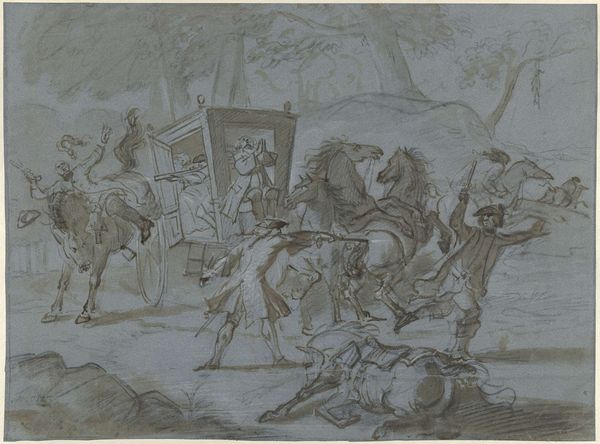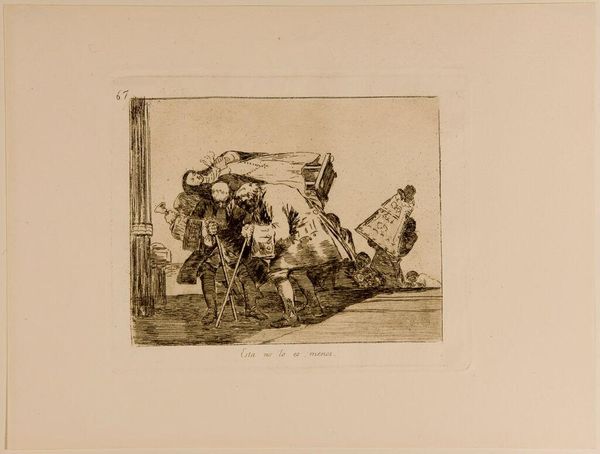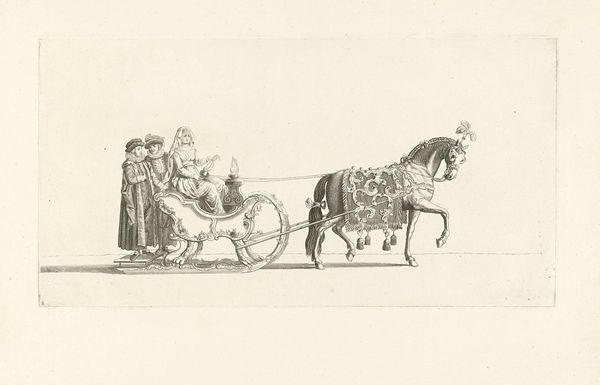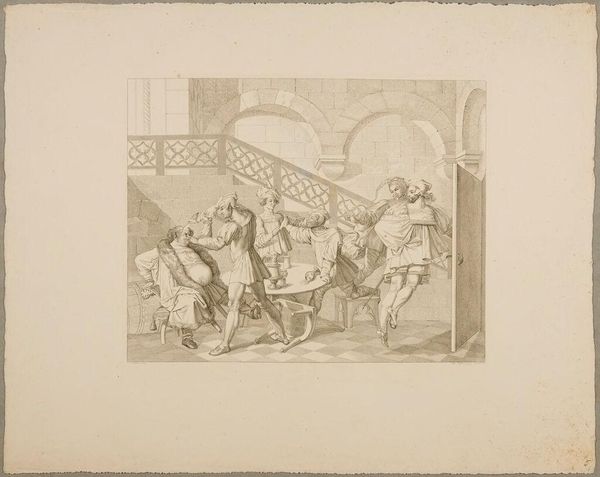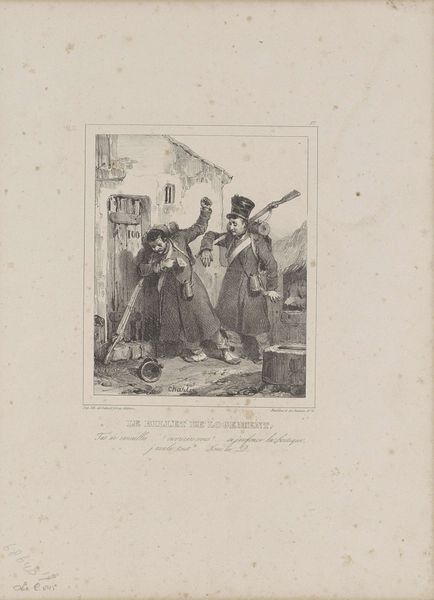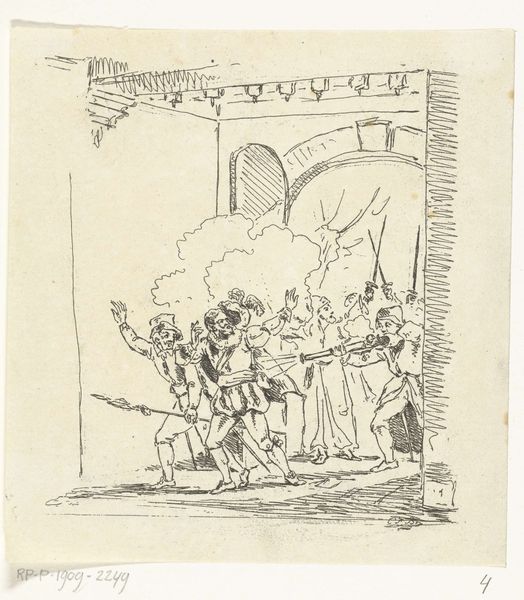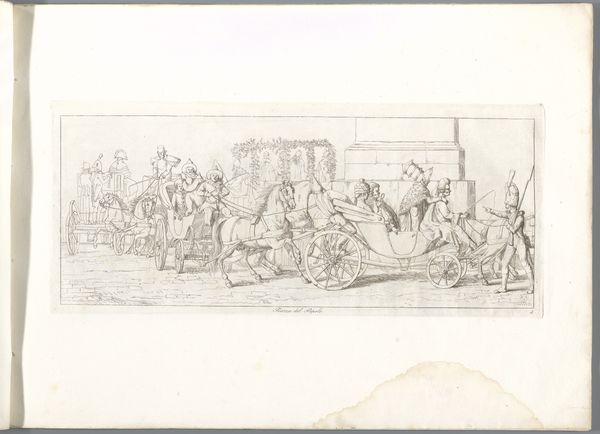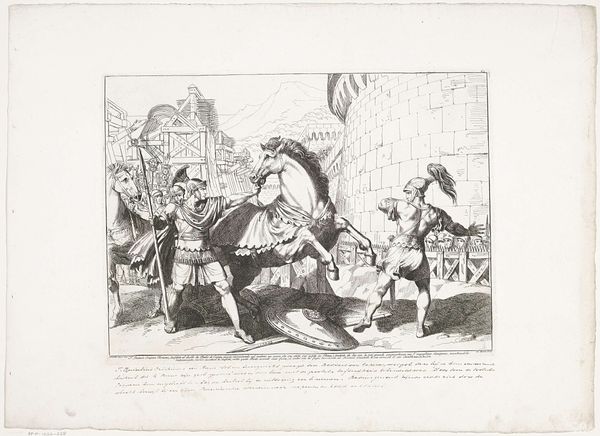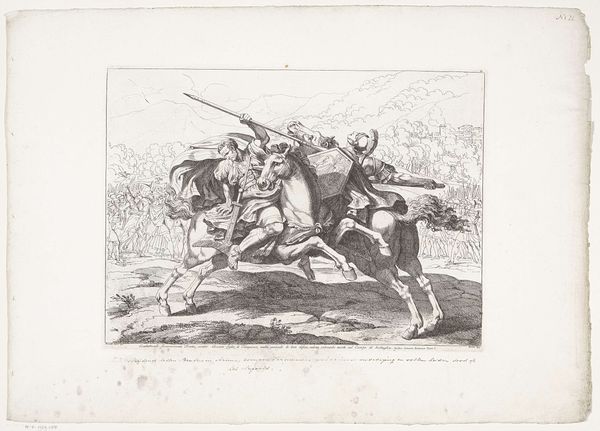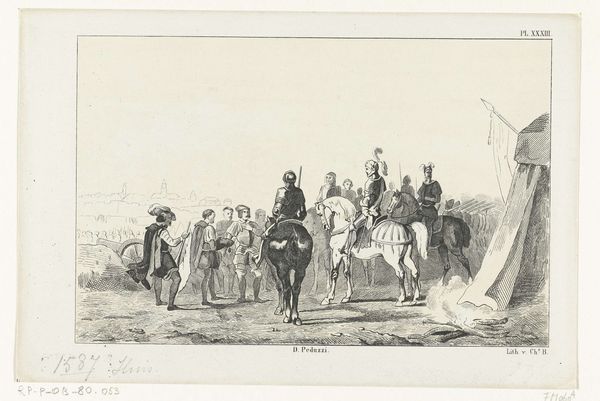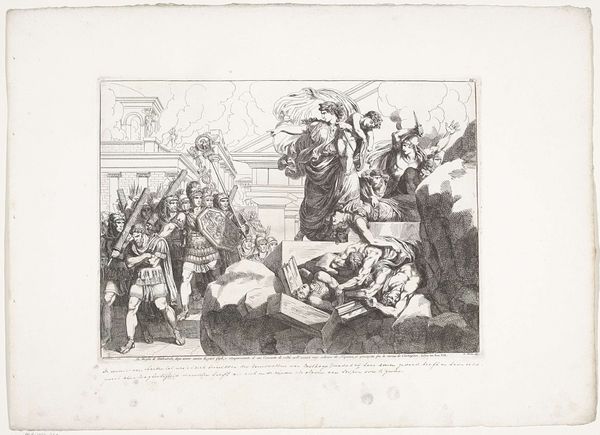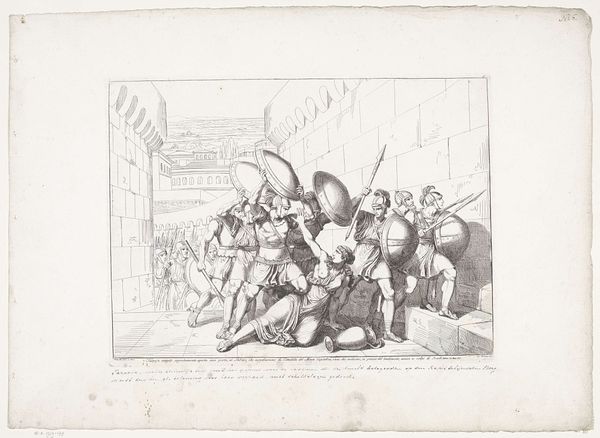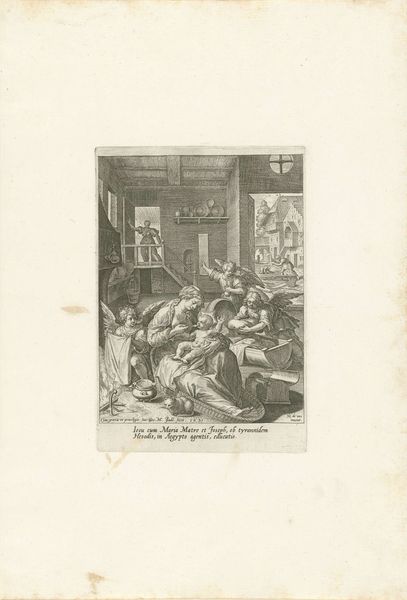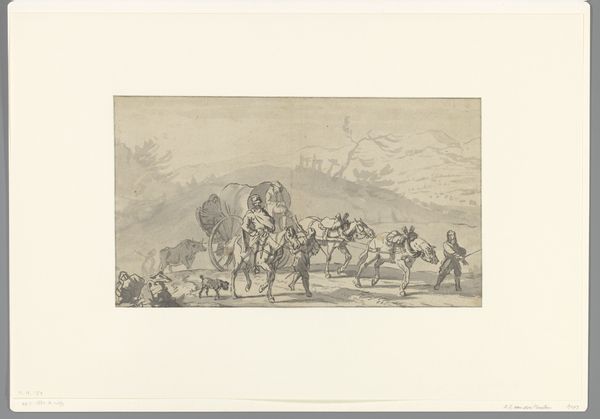
drawing, pencil, graphite
#
pencil drawn
#
drawing
#
aged paper
#
toned paper
#
light pencil work
#
narrative-art
#
pencil sketch
#
sketch book
#
figuration
#
personal sketchbook
#
sketch
#
pencil
#
graphite
#
sketchbook drawing
#
pencil work
#
genre-painting
#
academic-art
#
sketchbook art
Copyright: Public Domain: Artvee
Curator: This is Frederic Leighton's pencil and graphite drawing, "A Man and a Monkey Riding on Horseback," created around 1849. It appears to be a sketchbook page. Editor: It's charming! The figures have a kind of whimsical awkwardness about them, especially the monkey. You immediately get a sense of street theatre or some kind of festive procession. Curator: Exactly! Seeing this through a lens of performance, we might consider the social dynamics at play. The figure riding the horse, and even the monkey on his shoulders, wield a specific kind of power over the surrounding characters, who seem enthralled. Editor: It's intriguing that it's rendered on what looks like aged paper. How do you think the use of these specific materials informed Leighton’s process here, almost certainly a sketchbook? Was he drawn to the inherent qualities of toned paper as a cost effective support that didn’t require preparatory grounds? Curator: I think the medium heightens the sense of spontaneity, which can make it feel immediate. It reminds us that artistic creation can stem from improvisation and is inherently embedded in socioeconomic practices tied to access and convenience. Editor: It’s such a rapidly sketched crowd with these layered tonalities made solely through a material means, and within that there is a great economy to how Leighton has constructed a scene. I wonder, to what extent does this reflect on the broader Victorian fascination with the accessibility of reproducible image making as a form of distribution that shapes narrative. Curator: It really gets to the intersection between the role of the artist and a burgeoning Victorian economy invested in a certain type of illustration. This could potentially align with his broader concerns regarding visibility and identity that were forming throughout his lifetime, from youth onward. Editor: I see your point about the tension, especially given the figures, their means of attire and that interesting framing choice. It would be fascinating to analyze its relation to class representation or, in more general terms, an inquiry into the power structures within 19th-century British society. Curator: Absolutely, by looking at Leighton’s personal context, through the theoretical perspective you're hinting at, this work operates less as a light sketch, and instead it opens onto wider societal dialogues of its moment. Editor: Thinking about materials has reframed this sketch into such a richer view. Curator: Indeed! Exploring it intersectionally reveals layers of meaning, enhancing our engagement with this artwork.
Comments
No comments
Be the first to comment and join the conversation on the ultimate creative platform.
